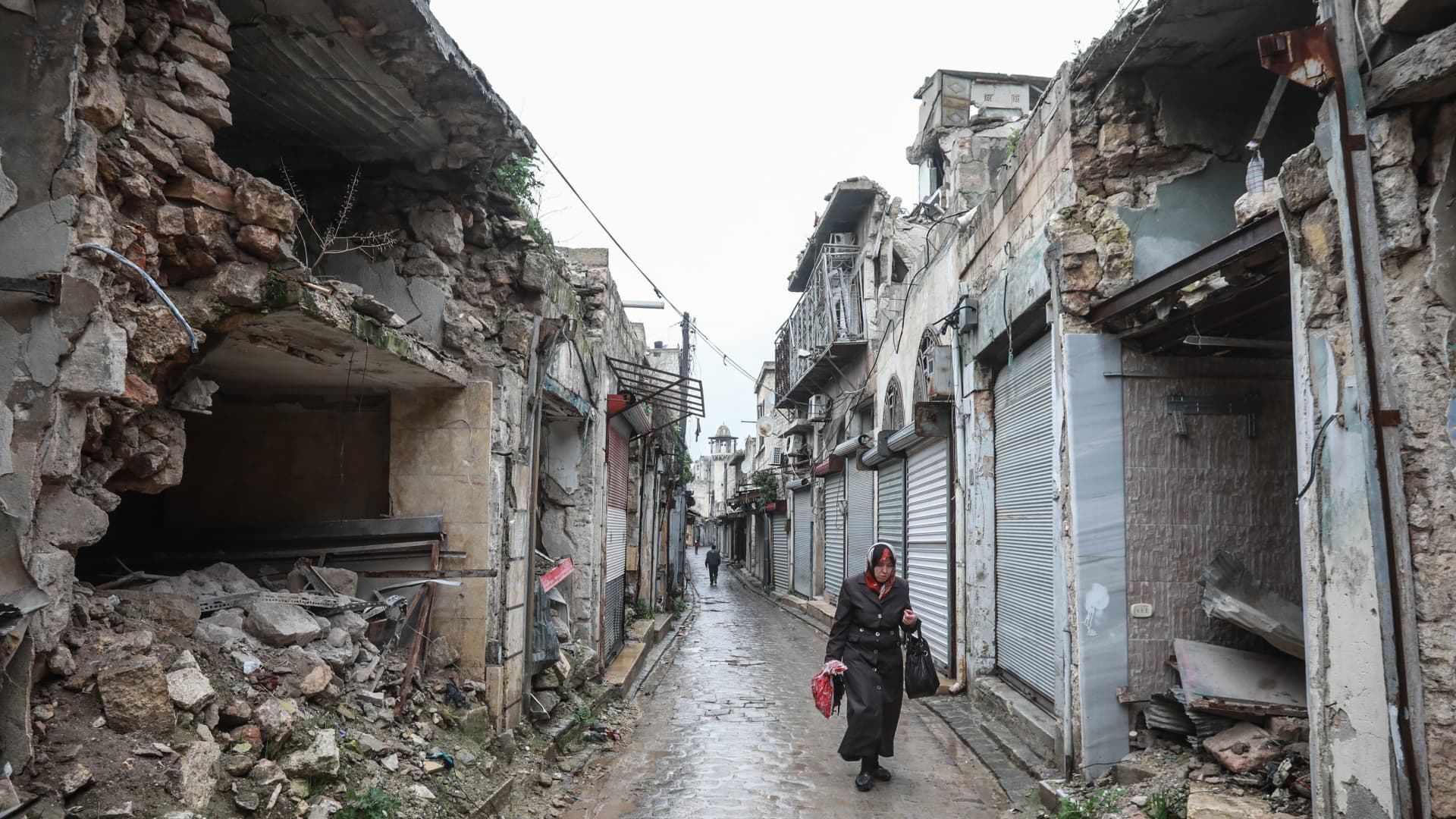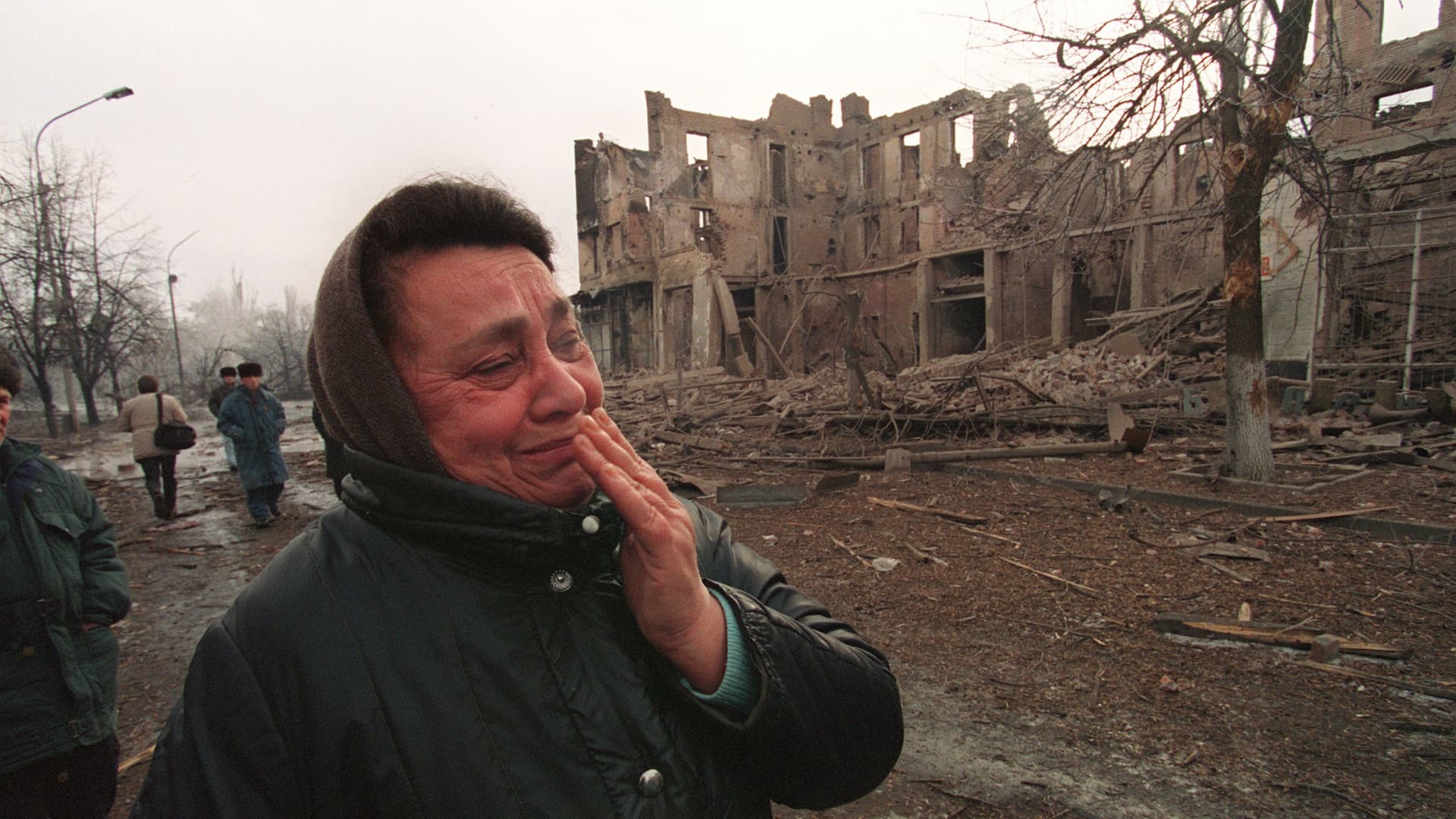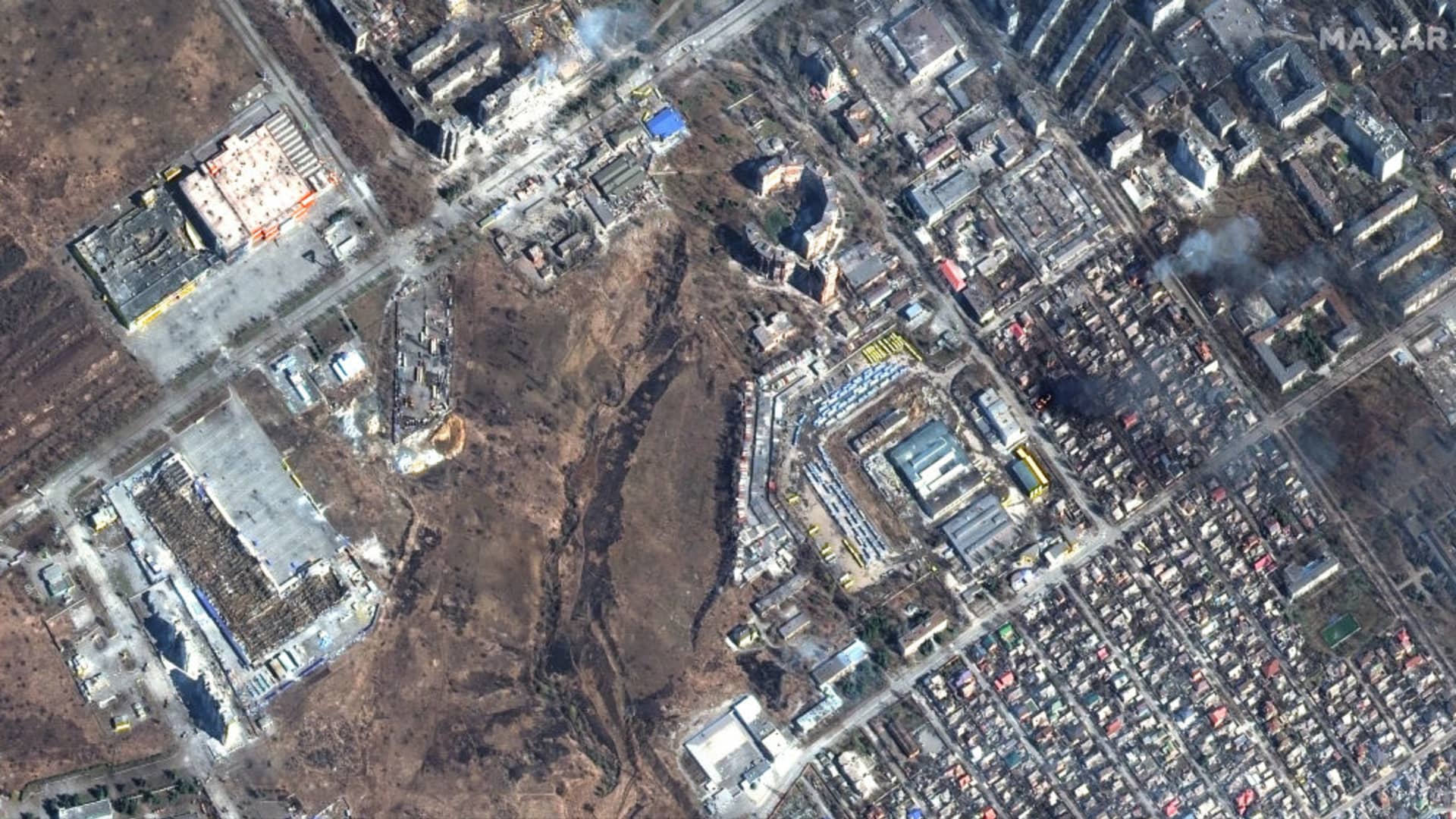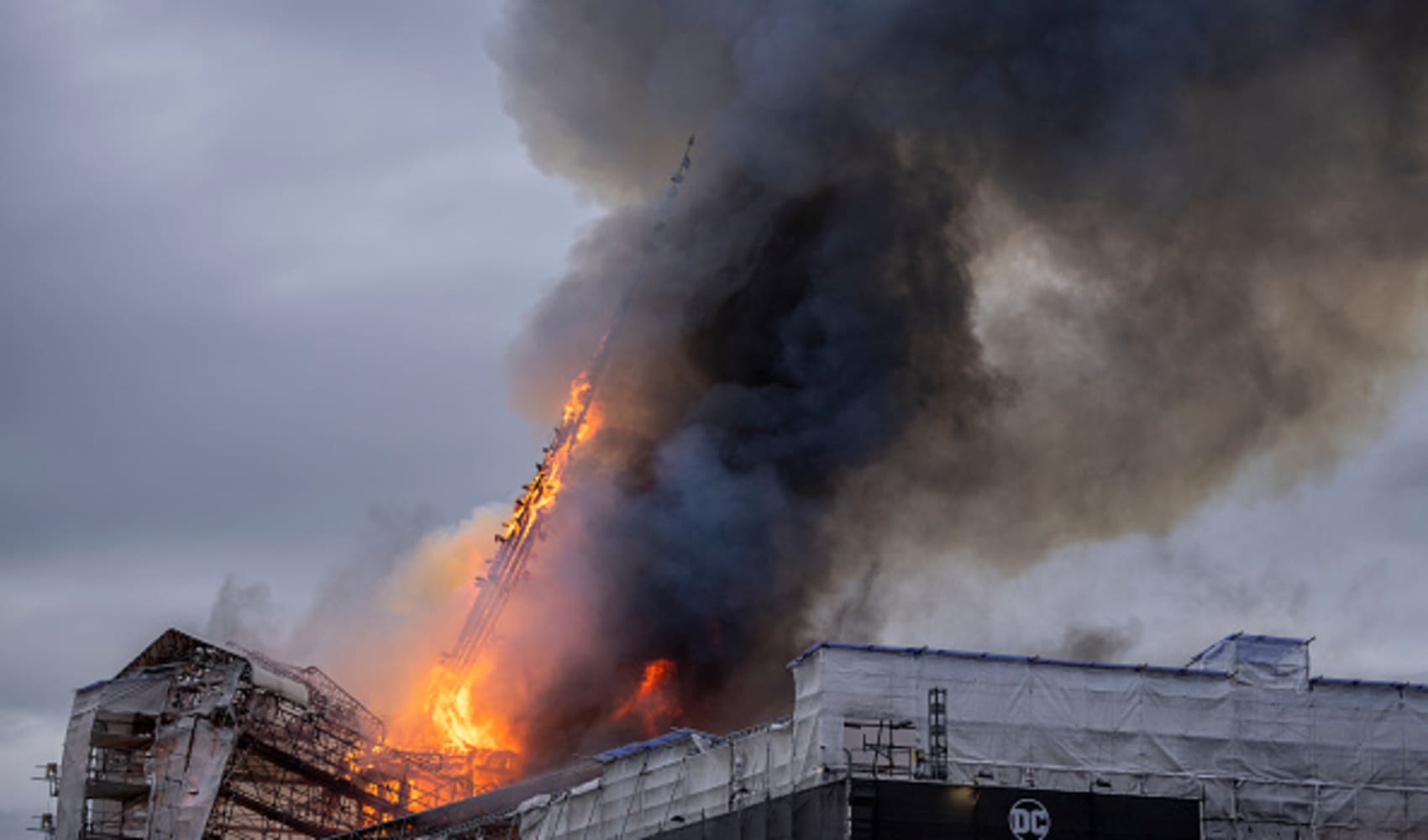
- Russia's invasion of Ukraine is fully underway and there are signs that its much-feared assault on the capital Kyiv has begun.
- Analysts warn Kyiv could face the same scale of destruction the Chechen capital Grozny, and Aleppo in Syria, faced in recent wars.
Russia's invasion of Ukraine is fully underway and there are signs that its much-feared assault on the capital Kyiv has begun with the shelling of residential districts in the north-west of the city, and a massive convoy of Russian military hardware dispersing to positions around the outskirts.
While Ukrainian forces and fighters have mounted a staunch resistance in other parts of the country — and Kyiv has been heavily fortified in anticipation of a largescale Russian attack — analysts fear the city could face the same scale of destruction the Chechen capital Grozny, and Aleppo in Syria, experienced in recent conflicts.
There has been sporadic shelling on parts of Kyiv since Russia's invasion began on Feb. 24. But attacks seem to have intensified in the last few days with air strikes on several residential buildings that have left several people dead.
Get Connecticut local news, weather forecasts and entertainment stories to your inbox. Sign up for NBC Connecticut newsletters.
These strikes followed reports that a closely-watched column of military vehicles has now regrouped and dispersed to various locations to the north of the capital.
"It's difficult to say if this [shelling] is just another sporadic episode or if it heralds the beginning of a full-on attack on the city in the manner of Grozny and the two Chechen campaigns or another parallel which is often drawn is Aleppo," Christopher Granville, managing director at TS Lombard, told CNBC Tuesday.
"Like the rest of the world. I pray it won't happen but I fear that it might," he said.
Money Report
Russia has said it does not target civilians despite overwhelming evidence to the contrary during its invasion of Ukraine, with the bombing of a children's hospital and maternity ward in the southern port city of Mariupol labeled a war crime by many observers.
Russia denied it had targeted civilians in the attack. It claimed, with no evidence, that the hospital had already been captured by Ukrainian "ultra radicals." Foreign Minister Sergei Lavrov played down condemnation of the attack, telling CNBC it was "not the first time we've seen shouting in response to so-called atrocities."
From Grozny to Aleppo
Likening the battle expected to take place between Russian and Ukrainian forces in Kyiv to those that happened in Aleppo and Grozny is a startling warning of what the city and its civilians could soon face.
The 2016 Battle of Aleppo, in which Syrian President Bashar Assad's forces — aided and abetted by Russia — took back rebel-held areas of the city after a month-long aerial bombing campaign, killing hundreds of civilians including children as a result and leaving the city largely in ruins. The battle (and Russia's support) were seen as a turning point in the civil war, and cementing Assad's regime.

What happened in Chechnya in the 1990s is closer to home for Ukraine, however, with the republic's capital city Grozny described by the U.N. as the "most destroyed city on Earth" after it was invaded, besieged, bombed and devastated by Russian forces not once but twice in the 1990s.
When the First Chechen War (which began in 1994 by Russia to suppress a Chechen separatist, independence movement) ended in 1996, an uneasy and fragile peace prevailed until Russia invaded Chechnya again in 1999 following a Chechen invasion of neighboring Dagestan, and a series of apartment block bombings in Russia. These were blamed on Chechen rebels but were also seen as a "false flag" operation, orchestrated by the Russian security services to provide an excuse to invade Chechnya again.
An early indication of Putin's aggressive and unrepentant style of leadership came when he vowed that the military would not stop bombing Grozny until Russian troops "fulfilled their task to the end."
The brutality of Russia's assault meant that ending did not take long to come as, after a winter siege of the city, Russian forces took control in February 2000 and established direct rule on Chechnya three months later.

By the end of the war, Grozny was largely ruins and thousands of civilians had died; some estimates put the civilian death toll from both Chechen wars at as many as 300,000 people. Putin became president of Russia soon after the war, his popularity at home boosted.
Years of insurgency have followed in Chechnya but it has been brought firmly into Russia's orbit in recent years. Chechen leader Ramzan Kadyrov is a firm ally of Putin, calling himself the president's "foot soldier" and Chechen paramilitaries are fighting in Ukraine on behalf of Russia with Kadyrov claiming to have visited his troops on the outskirts of Kyiv last weekend.
Syria's military has also begun recruiting troops from its own ranks to fight alongside Russian forces in Ukraine with a reported 40,000 soldiers having signed up.
Urban warfare
The fate, and potential fall, of Kyiv in this war is a source of dread for Ukraine's government under President Volodymyr Zelenskyy, city officials like Mayor Vitali Klitschko and residents that are still there, though many are among the 3 million or so Ukrainians that have fled the country.
Many Ukrainians have chosen to stay and fight, and Kyiv has been turned "into a fortress" as Klitschko has said.
"I hate to use this term ... but I think the 'Grozny-fication' of Kyiv has begun. And that is something I thought was unimaginable," Max Hess, a fellow at the Foreign Policy Research Institute, told CNBC Tuesday.
Similar to Aleppo or Grozny, Kyiv is likely to see similar scenes of bloody, urban combat if and when Russia tries to invade the city, Hess noted, believing that Putin feels he has to win "as a loss would be catastrophic to the regime domestically."
He warned any battle of Kyiv could be long and drawn out and fought from street to street, with the danger that it is concluded, like in Grozny, with Russia inflicting utter destruction.
"Grozny was never pacified until they effectively flattened the whole city. Chechen fighters were literally, waging war from collapsed rooftops and from sewers," Hess said, adding that similarly the war in Kyiv will have "to be fought from the streets, but the Ukrainian people seem rather willing to do so."
The fear for close watchers of Putin is that, as the war drags on, he might resort to more extreme measures to quell Ukraine's resistance, which he is widely believed to have underestimated.
"It is already painfully clear that Putin will not be able to achieve his political goal of forcing Ukrainians into surrendering their sovereignty and accepting a new era of Russian domination. Instead, he now has only two plausible options," Doug Klain, assistant director of the Atlantic Council's Eurasia Center, said in a blogpost Tuesday.
"Russia's ruler can either escalate the war further with an ever more brutal campaign to physically eradicate any Ukrainian opposition, or recognize the reality of his predicament and seek to end the carnage," he said.
The continuing siege of Mariupol shows that Russian forces are willing to surround and destroy Ukrainian cities if they want to, with the southern port city under a near-constant barrage of Russian shelling for almost two weeks. Conditions in Mariupol are desperate with the city running low on water, food, medicines, heating and power.

As many as 20,000 civilians may have died in Mariupol, a Ukrainian official has said, although the figures are hard to verify and the EU believes the official total is over 2,400. While several thousand civilians were able to escape Monday and Tuesday, Ukraine accused Russia of blocking an aid convoy to the city.
While negotiations between Russia and Ukraine aimed at brokering a peace deal continued into Monday and Tuesday, aggressive rhetoric continues to come out of the Kremlin.
Kremlin spokesman Dmitry Peskov said on Monday that Russian forces could take full control of major Ukrainian cities, rebuffing concerns over the impact on civilians as he claimed the U.S. had itself shown a disregard for human life with the NATO bombing of Yugoslavia, its wars in the Middle East and the invasion of Afghanistan, Russian state news agency TASS reported.
CNBC has contacted the Kremlin and the Russian Foreign Ministry for a response to concerns over Kyiv's fate.






